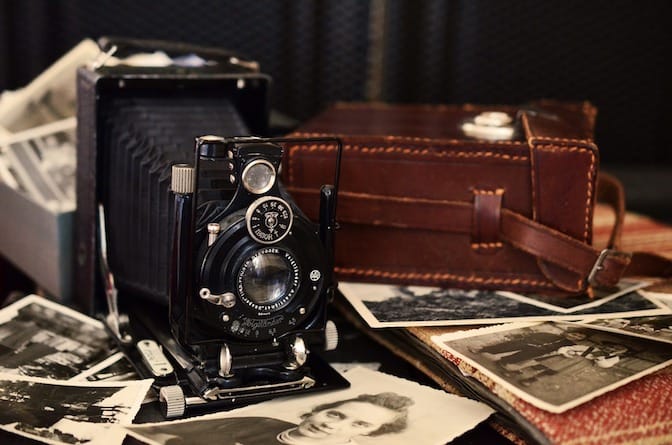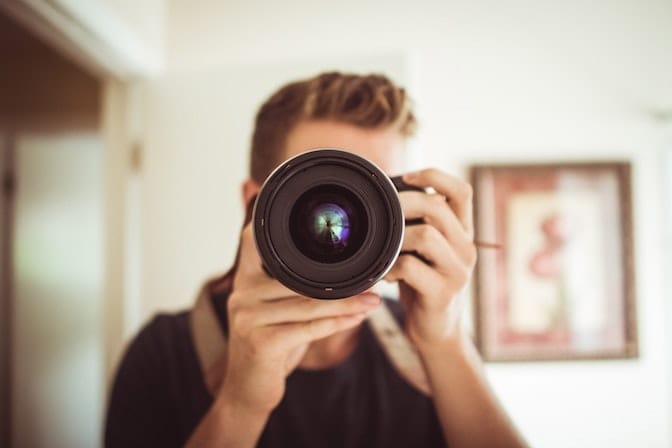The photo/no photo question is a common dilemma for job seekers. But does your CV actually need a profile picture?
It's a question that's definitely worth asking:
Headhunters and agencies are in fact receiving increasing numbers of CVs containing a photo of the candidate.
Some have welcomed the trend, which reflects the increasingly “visual” nature of our society.
Others prefer a traditional CV, containing only a candidate's skills and competencies and no photographs, to avoid the potential for discrimination.
To photo, or not to photo, that is the question...
But fear not! All your doubts will be answered by the practical tips contained in this article…
But let's take a step back…
In English-speaking countries, especially the United Kingdom, the USA and Canada, there is a strong tendency against the inclusion of photographs in CVs because of the potential for discrimination.
Here, to remove the risk of candidates being judged on the way they look rather than on their abilities, CVs without photos are preferred.
A word of caution:
The only case in which a photo is always required is for jobs in which an applicant's physical appearance is a fundamental aspect of the role, e.g. jobs in Fashion, such as models.
If you're looking for work in mainland Europe, on the other hand, you're going to need a photo in your CV.
In other European countries, selectors expect a photo with a CV, even where one hasn't been expressly asked for – even the European Curriculum Vitae format (Europass) has a space for it.
But between these two extremes, there is an infinite number of variations.
Here's the problem:
They are so many, in fact, that each individual job offer should ideally be evaluated on its individual merits.
But since that simply isn't practical, what you can do is find out about the main reasons behind the decision to include a photo in one's CV or not..
That way, if the job ad gives no specific indications, you can decide for yourself on the most suitable course of action to take!
5 Pros and Cons of Including a Photo in Your CV
Let's now look at the advantages and disadvantages of including a photo in your CV:
PROS
- The personal touch: including a photo in your CV gives it an extra dimension that will distinguish it from the photo-less competition. Clearly, any tool at your disposal that will help you stand out from the crowd should be grabbed with both hands.
- The memory game: a recruiter will remember your CV better if they can put a face to a name. Ensuring your face is impressed on the recruiter's memory already gives you a head start on the competition.
- Social networks: it may well prove pointless not including a photo in your resume, as 93% of recruiters will look at your social profiles (including any embarrassing snaps you may have on there) before contacting you!
CONS
- Personal info: a photo reveals personal information that should have no bearing on an applicant's success (age, gender, ethnicity, physical appearance).
- Attention: a photo will tend to distract a recruiter's attention away from your abilities. Inevitably, they will be - consciously or not - influenced by the picture – i.e. by those aspects of your physical appearance that should have no bearing on the selection process.
These are essentially the main arguments for and against the inclusion of a photograph in your CV.
Here's the point:
English-speaking countries are concerned with the negative consequences, while mainland Europe tends to emphasize the positive aspects. As a result, the two areas traditionally have diverging views on the inclusion of a photo in a CV.
However, as we have already seen, the grey areas in which there is no clear preference one way or another are very common.
So what you should do in such cases?
Let's find out…
2 Strategies for Deciding Whether to Include a Photo in Your CV
If a job ad does not expressly ask for a photo in your CV, then ask yourself the following questions:
- How important is physical appearance in your work? The more contact you have with the public, the more important the way you look will be (including how you dress).
- Which social media accounts do you use? Recruiters will almost certainly look for (and find) your social media profiles. It may therefore be an idea to actively present them with a professional-looking image from the word go. That way, they may not even end up seeing those snaps from last night's party!
Don't worry.
There is a solution.
The strategy for getting round the issue is not to include a photo in your CV (if you're unsure then it's best to err on the side of caution), but to provide addresses for your professional social profiles (starting with LinkedIn).
It sounds simple. And it is!
That way, if a recruiter is interested and wants to find out more about your application, you can steer them towards your profiles and the photos that you will have already prepared for precisely that purpose!
Everything You Need to Know About CV Photos
So you're writing your CV and need to select a profile photo. Look for a photo that meets the following requirements:
- Professional – avoid using cut outs from group photos - especially if they were taken on the beach!
- Recent – it might look cute, but that photo from your tenth birthday party is not CV material… leave it where it belongs in the family photo album!
- Neutral background – nothing in the photo should distract from your face
- High-resolution – no blurry/grainy/pixelated photos
- Well lit – light is crucial for taking a good photo
- Head and shoulders – i.e., no full-length shots or extreme close-ups
Stop right there:
The last point is worth examining in detail as getting the right format and dimensions can prove problematic.
Let's find out:
Full-length photos should definitely be avoided, unless where expressly requested, as they take up valuable space.
In addition, for online profiles, a full-length shot will be much heavier to upload, and since there is always a size limit, this may cause problems.
So what's the solution?
The best option is a head-and-shoulders shot, which should be inserted in your CV close to your name and contact details. In terms of dimensions, think ID card/passport photo size.
But what expression should you adopt? Is smiling appropriate on a CV photo or is it better to come across all professional and serious?
Ideally, you would have one for every occasion – i.e. one for each CV – but since that's impractical, trying to make it look as natural as possible is always a good bet.
The magic formula?
A nice natural smile that looks comfortable and unforced is best.
If your photography skills aren't up to scratch, you could seek the help of an expert photographer to create the perfect CV shot.
Alternatively, you could try following LinkedIn's 5 tips on selecting the best photograph for your profile.
5 Practical Tips for Achieving a Professional CV Photo
1. Choose a Recognizable Photo of Yourself
Did you ever see a photo of a person and then have trouble recognizing them when you finally met?
You don't want this to happen at a job interview!
How?
The way to avoid this is very simple:
The photo you choose should be recent, show you with your current haircut (and glasses where applicable).
2. Your Face Should Occupy 60% of the Photo
Make sure your face is in the centre of the shot.
Crop the picture a little below your shoulders and just above the top of your head. Your face should not be hidden by any accessories or jewellery etc.
3. Choose the Right Clothes
There's only one way of deciding what to wear for your CV photo and that's to dress the way you would if you were already doing the job you are applying for!
4. Adopt the Right Expression
Be natural, smile, look friendly.
You want the recruiter to be able to imagine having a pleasant time with you at the interview.
5. Pay attention to the Background
Make sure the background does not distract in any way from your face.
Now It's Your Turn!
So did you make sure you got the right pose, background and lighting?
Congratulations, you have the perfect shot for your resume!
What you need now are some job ads to send your splendid photo to!







![Thank You Letter After a Job Interview [Best Tips and Examples]](https://uk.jobted.com/blog/wp-content/uploads/thank-you-letter-interview-200x200.jpg)

![Example Cover Letter for CV [2 Templates, 10 Tips and 10 Mistakes]](https://uk.jobted.com/blog/wp-content/uploads/example-cover-letter-cv-200x200.jpg)
![How To Write an Effective CV [A Practical Guide]](https://uk.jobted.com/blog/wp-content/uploads/writing-CV-200x200.jpg)